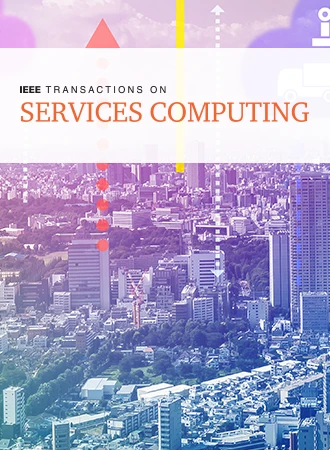基于时态上下文和特征融合的端到端深度学习 QoS 预测模型
IF 5.8
2区 计算机科学
Q1 COMPUTER SCIENCE, INFORMATION SYSTEMS
引用次数: 0
摘要
现有的基于深度学习的端到端服务质量(QoS)预测方法通常使用单热编码作为特征,将其输入到神经网络中。网络很难学习到有利于预测的信息。针对上述问题,提出了一种基于时间上下文和特征融合的端到端深度学习QoS预测模型。在提出的模型中,设计了三个块用于QoS预测。首先,设计用户服务编码转换块,将用户和服务的单热编码转换为用户和服务的潜在特征,充分利用稀疏矩阵中的数据;然后设计时间特征提取块,根据QoS值的时变特征提取时间特征。最后,将时间特征与用户和服务的潜在特征融合,预测QoS值。实验结果表明,在现有的数据集上,该模型在响应时间和吞吐量方面比其他先进方法具有更好的预测精度。本文章由计算机程序翻译,如有差异,请以英文原文为准。
An End-to-End Deep Learning QoS Prediction Model Based on Temporal Context and Feature Fusion
Existing end-to-end quality of service (QoS) prediction methods based on deep learning often use one-hot encodings as features, which are input into neural networks. It is difficult for the networks to learn the information that is conducive to prediction. Aiming at the above problem, an end-to-end deep learning QoS prediction model based on a temporal context and feature fusion is proposed. In the proposed model, three blocks are designed for QoS prediction. Firstly, a user-service encoding conversion block is designed to convert the one-hot encodings of users and services into the latent features of users and services, which can make full use of the data in sparse matrices. Then a time feature extraction block is designed to extract time features based on the time-varying characteristics of QoS values. Finally, the time features are fused with the latent features of users and services to predict QoS values. The experimental results show that on existing datasets, the proposed model has better prediction accuracy than other advanced methods in response time and throughput.
求助全文
通过发布文献求助,成功后即可免费获取论文全文。
去求助
来源期刊

IEEE Transactions on Services Computing
COMPUTER SCIENCE, INFORMATION SYSTEMS-COMPUTER SCIENCE, SOFTWARE ENGINEERING
CiteScore
11.50
自引率
6.20%
发文量
278
审稿时长
>12 weeks
期刊介绍:
IEEE Transactions on Services Computing encompasses the computing and software aspects of the science and technology of services innovation research and development. It places emphasis on algorithmic, mathematical, statistical, and computational methods central to services computing. Topics covered include Service Oriented Architecture, Web Services, Business Process Integration, Solution Performance Management, and Services Operations and Management. The transactions address mathematical foundations, security, privacy, agreement, contract, discovery, negotiation, collaboration, and quality of service for web services. It also covers areas like composite web service creation, business and scientific applications, standards, utility models, business process modeling, integration, collaboration, and more in the realm of Services Computing.
 求助内容:
求助内容: 应助结果提醒方式:
应助结果提醒方式:


